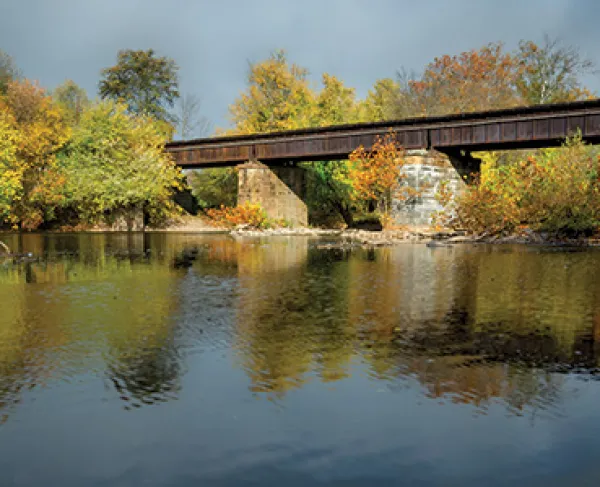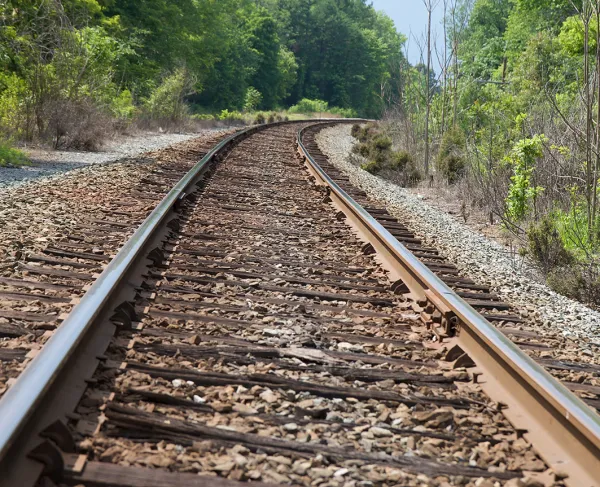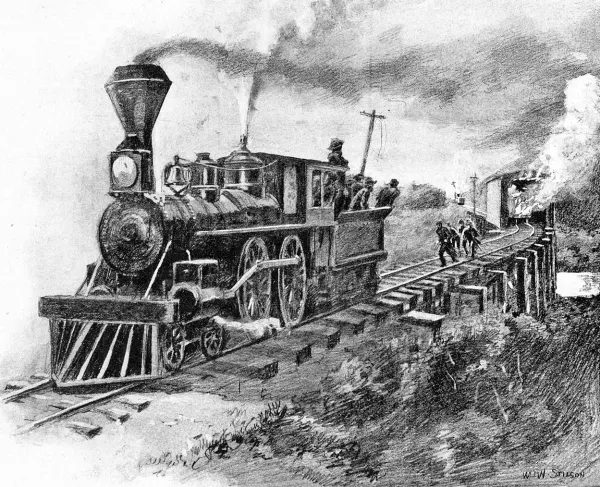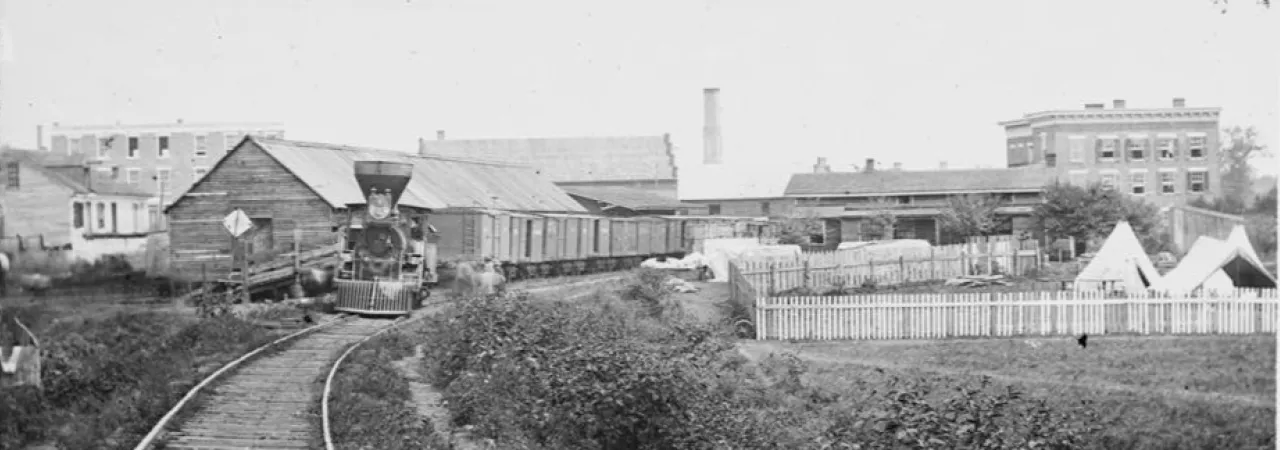
Freight train on Orange and Alexandria Railroad at Culpeper Court House, Virginia.
Railroads played a critical role in the American Civil War. They influenced planning, made the movement of large armies possible, and became important targets for raiders and armies alike. Here is a list of ten important and interesting facts about how railroads impacted the American Civil War and how the Civil War affected them in return.
Fact #1: Not all Civil War railroads were created equal.
The quality of railroads across the United States on the eve of the Civil War varied wildly. As a general rule, however, railroads in the North were much more efficient than those in the South. This was in part due to the standardization of railroad gauges in the north, allowing rolling stock to pass from one network to another easily. In addition, the North, with its larger population and industrial base, attracted much more railroad investment before the war than the rural and agrarian South. Thus, when the war began, Northern railroads connected more destinations with more rolling stock on higher-capacity lines than those in the South. While a train journey from New York to Chicago could take three days or less, traveling the same distance in the South could take a week or more.
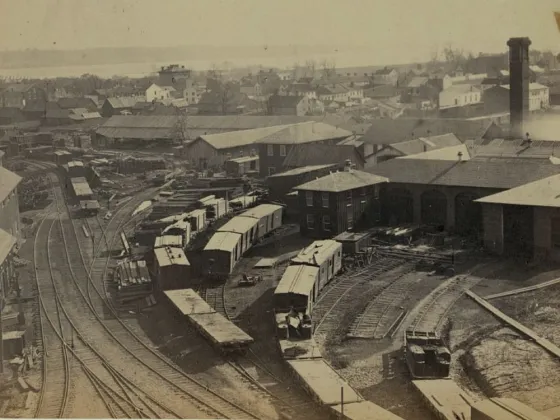
Fact #2: Northern railroads were centralized, while Southern Railroads were fragmented.
In the North, a small number of major companies dominated the railroad business, and chief among them the Baltimore and Ohio Railroad. While each railroad company covered a specific region, they worked closely together in the years leading up to the Civil War to standardize practices across their networks in order to ease passage of people and goods from one network to another. In the South, meanwhile, most rail lines were owned by separate companies, who did not readily cooperate and thus preventing the creation of any true railroad “network.” Each company ran its line differently from the others, with railroad gauges varying wildly across the South, meaning the rolling stock from one railroad could not be used on another without expensive modifications.
Fact #3: Railroads revolutionized Civil War Operations.
While the Civil War was not the first conflict when warring armies used railroads, it was the first where railroads were used at scale. General Joseph E. Johnston famously used the Manassas Gap Railroad to rapidly transport his troops to Manassas Junction for the Battle of Bull Run. However, rapid redeployment of troops was only one of the ways in which railroads revolutionized Civil War operations. Railroads also allowed large armies to be supplied far inland and away from major rivers, previously the only method of transport that could supply large numbers of troops and animals in the field. Railroads also revolutionized communications, with the telegraph lines laid alongside them acting as crucial passageways for messages traveling to and from the front lines.
Fact #4: The Union created a new agency to manage railroads in captured territory.
Early in the war, Union strategists realized that the smooth operation of captured railroads in Southern territory would be key to their success. To this end, the United States Military Railroad (USMRR) was organized. Many important figures in the Northern railroad industry contributed to its founding and operation, including Thomas A. Scott of the Pennsylvania Railroad, an early advocate, and Daniel C. McCallum of the New York and Erie Railroad, the first superintendent. The South, by contrast, had no comparable organization to manage their own railroads in wartime.
Fact #5: Railroads became important targets for partisan operations.
Early in the war, both sides acknowledged the importance of railroads and directed attacks behind enemy lines to damage or destroy rail lines and rolling stock. One of the most famous of these raids was the Andrews Raid in 1862 which resulted in a harrowing chase between the Union would-be saboteurs and a Southern railroad conductor. Many of the Union soldiers, dressed as civilians, who took part in the raid became the inaugural recipients of the Congressional Medal of Honor. While the Andrews Raid failed in its goal of burning the bridges over the Chickamauga Creek, it inspired many other like-minded people on both sides to undertake similar raids. Famously, partisan raiders led by Col. John S. Mosby in Virginia regularly targeted the Baltimore and Ohio Railroad.
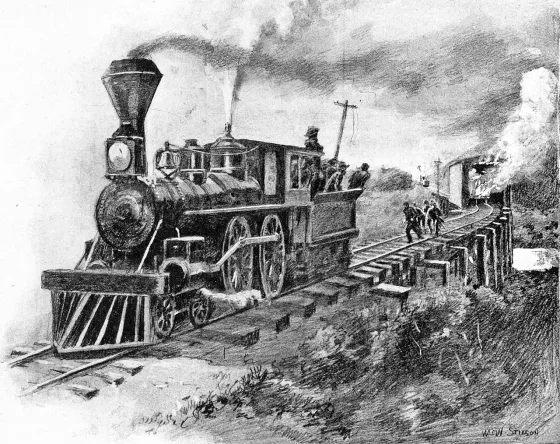
Fact #6: The Union built multiple new railroad lines during the war to help improve the supply lines of various armies.
In addition to managing captured Rebel railroads, the USMRR also oversaw the construction of new railroad links to strategic points where they did not already exist. One of the first of these was a connection from Manassas Junction to Centreville, Virginia. A crucial new constructions was the railroad which connected City Point, Virginia, to the Union siege lines around Petersburg. This link immensely improved Grant’s ability to move supply from City Point, where supply ships would drop off their goods, to the front lines. The USMRR restored nine miles of the existing Petersburg to City Point rail line and added 21 miles of extensions to bring trains within short distance of the entire Union front line.
Fact #7: The Transcontinental Railroad began construction during the Civil War.
The Transcontinental Railroad began its life during the Civil War when Congress passed the Pacific Railroad Act of 1862. While the railroad had been in the planning stages for many years and other attempts had been made to approve funding for the project, it was the secession of the Southern states and the withdrawal of their representatives from Congress which made passage possible. Southern senators—who had lobbied for a different, more southern route—could no longer obstruct the bill. Construction began in 1863, in the midst of the Civil War, and completed in 1869.
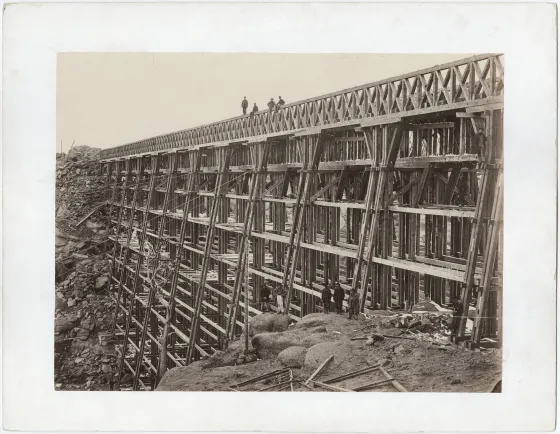
Fact #8: The USMRR helped enable Sherman’s rapid advance toward Atlanta.
While Gen. William Tecumseh Sherman is famous as a destroyer of railroads, the rapid repair and refurbishment of the Western and Atlantic Railroad allowed his advance toward Atlanta along his route of march. Confederate forces burned bridges and took other measures to try and deny Sherman’s army the use of this railroad. However, USMRR personnel following behind the army reconstructed destroyed bridges, repaired damaged track, and rewired telegraph lines to bring the railroad back to life. This railroad connection, stretching all the way back to Louisville, Kentucky, was Sherman’s lifeline and the primary reason his 100,000 strong army was able to supply itself away from other major supply routes.
Fact #9: Railroads both broadened and narrowed the areas where armies could operate.
In the Civil War, both sides maneuvered large armies in the field, the largest ever deployed in North America. With so many soldiers to feed, massive amounts of supplies were constantly needed. These armies were too big to live off the land, and thus required rivers or railroads for the rapid movement of supplies. While railroads allowed armies to operate away from major rivers, the railroads themselves acted like rivers, forcing armies to stay nearby. Thus, while on a map it may seem like the armies had a great deal of freedom to maneuver, in reality they could only operate away from a railroad or river for a matter of days or one or two weeks, carrying all the supplies they needed with them. It is no surprise then that almost all of the major campaigns of the Civil War were directed along or toward a railroad or river.
Fact #10: The lessons learned during the Civil War influenced militaries across the globe.
Foreign military observers watched the American Civil War with keen interest, especially the use of railroads in combat. German, French and British strategists drew upon the examples provided by the Civil War to improve their own doctrines and preparations for war with regard to railroads. Many of these lessons, along with those learned in subsequent minor conflicts, matured until they were put to full effect in the mobilizations of 1914 at the beginning of World War I. While practices had evolved a great deal in the 50 years between those wars, the intellectual basis for these changes lay in the groundwork laid by both sides, but in particular the USMRR, during the Civil War.
